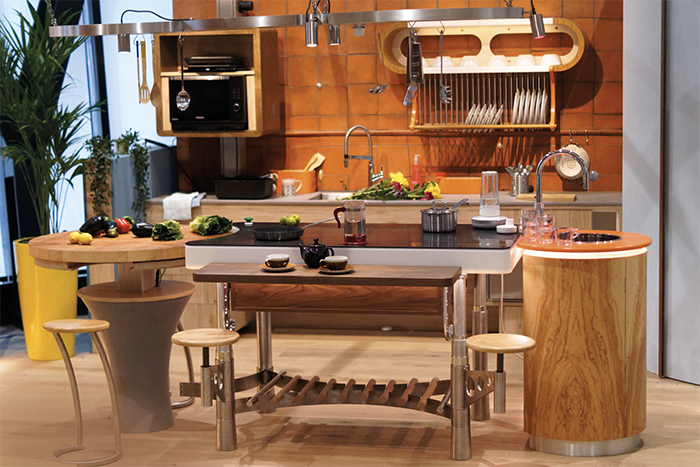Peter Gore, professor of practice (ageing and vitality) at Newcastle University, tells us why we need multigenerational kitchens, why traditional designs were missing the mark and how he and Johnny Grey worked together to come up with a better solution.
Q: What first led you to look at multigenerational kitchen design?
A: I have worked in the field of technology and ageing for 20-plus years. I was invited many years ago by Taylist Media to speak to the industry about the potential market for kitchens for older people – given that roughly 80% of the nation’s wealth was with the 50+ population, it seemed to make sense.
A colleague told me that everyone thinks of ‘old’ as 15 years older than them, and the industry didn’t generally know how to engage with the older market.
My ongoing research showed that most, if not all, of the challenges we think of as associated with ‘older people’ were in fact experienced for many different reasons across the entire life course.
Further research into housing showed a returning trend for families of all ages to live together – driven by the financial crisis, but then by aspiration, to the point where now 60% of people surveyed a few years ago said they were interested in living in multigenerational housing.
Johnny Grey pointed out to me that the one place people would be together would be the kitchen, so if we could make that aspirational and practical, we might be able to address many issues and create opportunities for industry.
Q: How were traditional kitchen layouts failing to cater for multiple age profiles?
A: Traditional kitchen layouts seemed to be focused on one or two people who cooked, and were largely not intended for the challenges of perhaps four gene-rations occupying the space at the same time – using the space for a variety of purposes (not just cooking), and with a potentially wide range of attributes, abilities and risks. Multiple-generation occupancy – and larger numbers – requires different thinking at many levels, from storage that works for everyone, to multiple-use spaces, proper assessment and mitigation of multiple risk scenarios.
Q: What were the key areas you identified as crucial to creating a practical 4G kitchen?
A: Storage that works for all, good visibility, good and flexible access to multiple areas, carefully designed natural workflows, designing out foreseeable risks and generally comfortable usability.
Q: Tell us a little about your collaboration with Johnny Grey?
A: I first met Johnny when we were both on a panel discussing kitchen design – and I was rude about designers who “only designed for people like them”. He forgave me and suggested we might collaborate to fix “the design issues” I’d complained about. Over several years, we have worked together to design a multi-generational kitchen concept that we are both happy to promote, which we have demonstrated nearly every-one can use safely and enjoyably, and that taps into people’s aspirations.
We have worked closely with a group of ‘retired people’ called Voice, founded at Newcastle University, to understand their wide experience and aspirations. Johnny’s wealth of experience, his extensive industry connections and forensic knowledge of kitchen design has been complemented by my – much more limited – experience of people’s needs, aspirations and challenges.
Q: Can you give us a brief rundown of the salient features of the 4G kitchen currently on display at the National Innovation Centre for Ageing?
A: Reflecting the multiple and challenging occupancy, we have storage solutions that provide easy access for all – for example, a large “I can see everything” walk-in pantry. There are many surfaces for food preparation, induction cooking and wireless appliance operation, plus places for people to do homework, make a drink, chat and generally socialise and eat – all accessible for different occupants.
Given the significant increase in risks associated with eight people from four generations and ‘no single person in charge’, risks such as spillage, flooding and overheating are all minimised, monitored and mitigated where necessary. A family-sized table allows for people to eat together and socialise – supported by variable ‘mood’ lighting.

